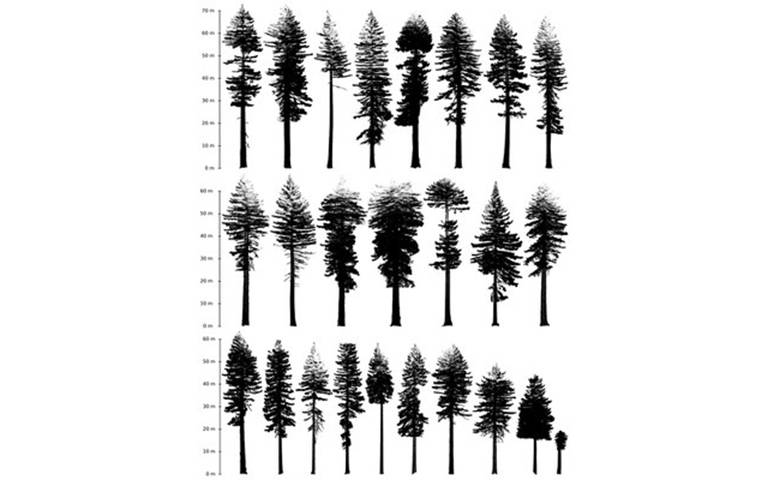Measuring the world's biggest trees in California
14 January 2021
Improving estimates of carbon storage

Professor Mat Disney and colleagues from NASA recently published a study in Nature Scientific Reports, showing that some of the world's tallest trees, the coastal redwoods (Sequoia sempervirens) of northern California, are potentially much more massive than previously thought.
Mat and the team used terrestrial laser scanning (TLS) to measure the 3D size and shape of these trees across several sites. It is the first time redwoods have been measured in this way using TLS to estimate their volume and mass. This tells us how much carbon is stored in the trees over their lifetimes and in such old-growth forests more generally.
Coastal redwoods and their close relatives, the giant redwoods (Sequoiadendron giganteum), are some of the most massive living things on earth and can live for more than 2,000 years. The TLS measurements are able to capture the tree form in ways that have not been seen before, as shown in the image. Redwoods of a similar age can have very different shapes, reflecting their different life histories even within a single stand.
The largest tree measured by the team was the Colonel Armstrong, which is nearly 90m high, and over 3m in diameter at the base. The threats such trees face were illustrated last summer when the Colonel Armstrong was dramatically threatened by the extreme Californian fires. The measurements suggest that the Colonel weighs around 110 tonnes, comparing very closely with the only other independent estimates by expert tree climbing teams using time-consuming manual measurements. Significantly, the figures were up to 30% higher than those based on commonly applied models using satellite estimates of forest carbon. It thus suggests that these currently underestimate carbon in tall forests across wide areas.
Mat's work is showing how to improve satellite estimates and find new carbon along the way. It was funded in part by NASA's Carbon Monitoring System, through Mat’s colleague, Professor Laura Duncanson of the University of Maryland, and the NASA Global Ecosystem and Dynamics Investigator (GEDI) mission.
The results were featured in a number of news outlets including The Times (£). Mat also appeared in a feature, Plant Britain, on BBC1’s Countryfile on 29 November (about 19 minutes in), talking about scanning trees, carbon and climate.
Perhaps most excitingly, they also appeared in comicbook form, created by artist and science communicator Naomi Volain, as part of her ‘Plants Go Global’ series. This is an excellent and rather different way to communicate new plant science.
 Close
Close

